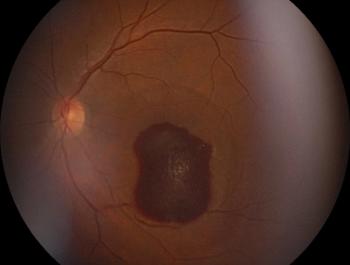
Using CLIA testing to improve outcomes
CLIA testing may soon become a more practical option for clinicians looking to improve patient care without going through a separate laboratory for testing, says John Rumpakis, OD, MBA, at the American Optometric Association (AOA) annual meeting.
Boston-CLIA testing may soon become a more practical option for clinicians looking to improve patient care without going through a separate laboratory for testing, says John Rumpakis, OD, MBA, at the American Optometric Association (AOA) annual meeting.
With the current trends in health care, he says, Medicare is progressing to soon adopt 95 percent of outcome-based care. This means that pressure is on the optometrist to see more patients for less money and get better results, which Dr. Rumpakis says is very unlikely to happen. You can do two of the three, but not all of them, he says.
Clinical Laboratory Improvement Amendment (CLIA) testing helps with this because what would normally take three or four visits in the past may now require only one or two.
Outcome-based care
The system that optometrists function in requires medical necessity for everything they do.
Optometrists must demonstrate that the test or procedure performed met one of the following 4 requirements:
- Create a diagnosis
- Follow a diagnosis
- Create a treatment
- Follow a treatment
This also means clinicians are not permitted to bill for a higher level service when a lower one would have been sufficient.
Chief complaints
When a patient calls your office to make an appointment, one of the primary questions to ask is the specific reason for the visit.
Having this documentation makes it easier to form a written chief complaint, which is a summary of the patient’s initial reason for making the appointment, or a retelling of the patient’s own words.
Also important on that initial phone call is reminding the patient to bring his medical insurance card if they have one as well as his vision insurance card.
Ensuring that all medical or vision coverage is documented is key for medical records to read like a storybook-which Dr. Rumpakis says they should.
If symptoms of eye disease are found during an exam but there was no specific complaint from the patient beforehand, there is a possibility that medical insurance will not cover the visit.
“A medical plan is really sick care, not well care,” he says.
For example, Dr. Rumpakis talked about a patient coming in with complaints of blurry vision. To simply write “blurry vision” in the record is far too broad, he says. Specifics should be entered, such as whether refraction or physical exam will be performed, whether the blurry vision occurs at near or far, at what time of day it occurs, in which eye, etc.
Dr. Rumpakis warns that the Office of Inspector General is looking for overuse of comprehensive eye exams, and it is for that reason that records must be more exact.
CLIA-waived coding
CLIA does not follow the rules for reimbursements of normal CPT codes.
Dr. Rumpakis explains that using CLIA is generally not a significant revenue-building technique, but it does enhance patient care overall.
CLIA-waived tests are performed by the physician, billed by practice, and reimbursable to the practice under a revised schedule that does not follow Resource-Based Relative Value Scale (RBRVS), a system of valuing physican services. This is opposed to traditional testing which is performed, billed, and reimbursed to lab.
For example, the practice would not bill or be reimbursed when ordering a blood test, but the practice would bill directly and be reimbursed when ordering an osmolality test.
In addition, optometrists must ask questions and run tests that are pertinent to the patient situation only. Running a few extra tests for your benefit-to “cover your butt”-is not appropriate, Dr. Rumpakis says.
What is CLIA?
Congress passed CLIA in 1988, establishing quality standards for all lab testing to ensure accuracy, reliability, and timeliness of test regardless of where the tests are performed.
Currently, there are three CLIA tests available:
1. TearLab Osmolarity System (TearLab)
• Test both eyes and code both eyes for this procedure which evaluates tear osmolality
• 2016 reimbursement per test is $22.50
• Tips cost $8 to $14, depending on volume
“Please do not look at this like a profit center,” says Dr. Rumpakis. “This is about patient care.”
2. Adenoplus (RPS)
• An infectious agent antigen detection by immunoassay with direct optical observation
adenovirus
• $16.33 reimbursement
3. InflammaDry (RPS)
• Detects MMP-9, an inflammatory marker that is elevated in patients with dry eye
• Reimbursement is $15.72
Ensuring proper record keeping
“I am absolutely anal retentive about this,” Dr. Rumpakis says.
He suggests that once a month optometrists in group practice exchange four or five patient records with another OD for audit purposes. If you are in solo practice, he advises signing a HIPAA agreement with another OD in the community to exchange records.
While CLIA testing is a very small part of revenue stream, it can help monitor diagnosis over a long term.
If you buy any of these products mentioned above, the company will help practitioners obtain a CLIA certificate for the practice.
Newsletter
Want more insights like this? Subscribe to Optometry Times and get clinical pearls and practice tips delivered straight to your inbox.




















































.png)


